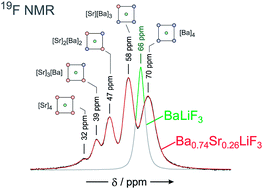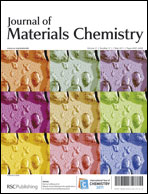Access to metastable complex ion conductors viamechanosynthesis: preparation, microstructure and conductivity of (Ba,Sr)LiF3 with inverse perovskite structure†
Abstract
Highly metastable Ba1−xSrxLiF3 (0 < x ≤ xmax ≈ 0.4) with an inverse perovskite structure analogous to that of BaLiF3 was synthesized by soft mechanical treatment of BaF2 and LiF together with SrF2 at ambient temperature. Ex as well as in situX-ray powder diffraction (


 Please wait while we load your content...
Please wait while we load your content...